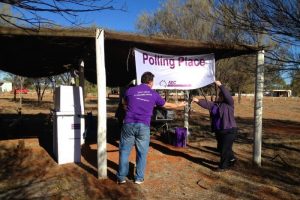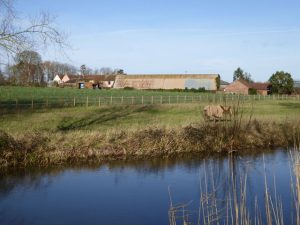This piece was written by gg and published by Croakey during Anti-Poverty Week 2016. It was edited for Croakey by Marie McInerney. Thanks to Marie and Melissa Sweet for the work they do on Croakey and for permission to publish the piece in www.aggravations.org
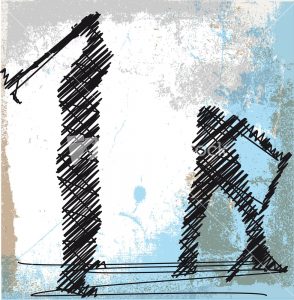
For people living in rural and remote areas to have a real chance of equal health and equivalent access to health services, more focus is needed from the Federal Government on the urgent need for economic change in those areas.
People in rural communities want to see explicit and meaningful recognition in government programs of their own characteristics and challenges. There are positive signs, including the new Building Better Regions Fund.
The income challenge to good health
Some of the social determinants of health are stronger or better in country areas than in Australia’s capital cities. These include the greater connectedness of people with each other, resulting in a valuable sense of community. There is also easier access to the natural world, a disposition to be independent – and less time spent in traffic jams.
Unfortunately, however, most of the weightier social determinants of wellbeing are tilted against people in rural and remote areas. Most importantly, these include years of completed education[1] and access to work and income.
In 2010-11, wage and salary earners outside Australia’s capital cities earned only 85 per cent of the amount their capital city counterparts earned. The percentage of employed people earning $15,600 or less was 15 per cent higher outside capital cities, while the percentage of employed people earning $78,000 or more was 26 per cent lower.
In 2011-12 the median gross household income in the cities across Australia was 1.37 times higher than for the ‘balance of state’. People in rural and remote areas also experience higher rates of unemployment
These significant income challenges have been exacerbated as the nation’s mining sector has moved from a growth-and-capital-development to a production-only phase. The slowdown in employment opportunities in that sector has naturally been felt most strongly in rural and remote regions.
The government recognises the urgent need to diversify Australia’s economy through the development and growth of newer industries. Much of the focus has been on the loss of manufacturing jobs, the majority of which are in the capital cities and major regional centres. This is perhaps the reason why there seems to have been little focus on the urgency of the need for economic change in rural and remote areas.
This situation will have to change if people in rural and remote areas are to have a real chance of equal health and equivalent access to health services as those in the cities.
A good sign
The Governor General’s speech, given to the opening session of each new Parliament, is supposed to set the agenda for the duly elected government. It is a statement of intentions, formulated by the new administration and delivered by the Queen’s representative.
For people concerned with the wellbeing of Australia’s rural, regional and remote people, it was encouraging to hear Sir Peter Cosgrove include the following in his formal speech:
Regional communities
Cities are crucial, but there are almost eight million Australians living in rural, regional and remote communities. Our regional communities generate 67 per cent of Australia’s export earnings and have untapped growth potential.
My government will tap into that potential with the $200 million Regional Jobs and Investment Package.
The package will support regional communities to invest in and diversify their economies, create new business and innovation opportunities, and help boost jobs in regional areas.
The new Building Better Regions Fund will also provide continued support to regional projects.
The Prime Minister’s emphasis
The Prime Minister has made it clear that an important part of his government’s agenda is to diversify the economy, including through the development and expansion of industries not tied to the export of mineral resources. In working on this agenda the Prime Minister is aided by Assistant Minister for Cities and Digital Transformation Angus Taylor – ironically the member for Parkes, consisting of large parts of southern inland New South Wales – and Minister for Urban Infrastructure Paul Fletcher, the Member for Bradfield, an electorate of just 101 square kilometres.
In a major speech in April the Prime Minister said that “smart cities” would be the engine room of innovation and growth in Australia’s new economy. The aim is to provide jobs closer to people’s homes, more affordable housing, better transport connections and healthy environments.
Regional cities are included in the rhetoric relating to ‘Smart cities’ and Townsville is to be the first to be recognised in a ‘City Deal’ under the Smart Cities Plan. But Townsville has a population of 180,000 and the majority of Australia’s rural, regional and remote people live in places far smaller.
The Government also promotes cities as ‘living laboratories’ for its National Innovation and Science Agenda, including the work of the Digital Transformation Office.
Hopefully the Prime Minister will not forget that the need for economic diversification is arguably stronger in rural than city areas. It is after all in those areas that the bulk of mining and minerals activity occurs.
This underlines the critical role to be played by Senator Fiona Nash in her capacity as Minister for Local Government and Territories, Regional Communications and Regional Development. She will be expected to demonstrate that the Turnbull Government does have a specific agenda of support for rural and remote industries and their people.
The Regional Jobs and Building Better Regions approaches
In this endeavour Senator Nash has two programs from which the agenda can be launched. Both were mentioned in the Governor General’s speech.
The nine regions eligible for the Regional Jobs and Investment Package are all non-metropolitan and have been selected because they have been affected by the slowdown in mining, falling commodity prices and changes to the manufacturing sector – but also have potential for growth.
This emphasis is good. But of course there is just $20-30 million for each of the nine selected regions, to be spent on business innovation grants, local infrastructure projects, and skills and training programs.
The Government’s plans for the Building Better Regions Fund (BBRF) also provide an encouraging signal.
The BBRF is to replace the National Stronger Regions Fund (NSRF). Successful applications to the third and final round of the NSRF have recently been announced, and from the list it is clear that NSRF was primarily for non-metro activity. Only about 15 per cent of the $126 million allocated in that round went to metropolitan areas, including grants to Hurstville and St George in Sydney, Wollongong, South Perth and the Blue Mountains.
But the fact that metropolitan proposals will not be eligible for support under BBRF suggests that the special circumstances and needs of rural and remote areas will be recognised by the Government.
The BBRF will focus exclusively on areas outside the major capital cities. The majority of its funds will still be focused on infrastructure, but there will also be a community investment stream. This will provide an opportunity for small community groups and volunteer organisations to access funding where they can’t contribute matching money themselves. This community stream will help build local leadership and community projects which have previously been ineligible.
Project proposals will compete against other projects of similar size: small projects against small projects, medium against medium, and major infrastructure projects against major infrastructure projects.
These are positive signs. To become meaningful there must be no reduction in the funds available to BBRF relative to the National Stronger Regions Fund it will replace. About $630 million was available through three rounds of the NSRF. And the people of rural areas will be looking for examples of such positive discrimination in other policy areas. They crave some explicit and meaningful recognition of the particular characteristics and relative challenges facing rural people in the communities in which they are fortunate enough to live.
Anti-Poverty Week, 16-22 October
There is another opportunity for all of us to focus on the rural aspects of deprivation in Anti-Poverty Week. It’s a special Week in which all Australians are encouraged to organise or take part in an activity aiming to highlight or overcome issues of poverty and hardship here in Australia or overseas.
It was established in Australia as an expansion of the UN’s annual International Anti-Poverty Day on October 17.
The Principal National Sponsors of Anti-Poverty Week for 2016 are the Brotherhood of St Laurence, the Australian Red Cross, the St Vincent DePaul Society and the University of New South Wales. Much of the Week’s momentum comes from Julian Disney and Jill Lang, Founder and National Coordinator respectively of Anti-Poverty Week.
To get involved in an activity for Anti-Poverty Week in your area, go to http://www.antipovertyweek.org.au/
[1] In 2013 over 75% of children in metropolitan areas completed year 12, compared with just under 70% of children in provincial and remote areas, and only 40% of children in Very remote areas. This and most of the other statistics in this piece are from the NRHA’s wonderful Little Book of Rural Health Numbers.
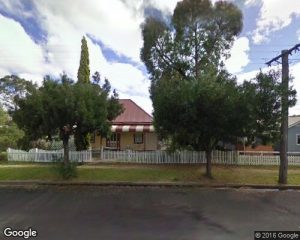
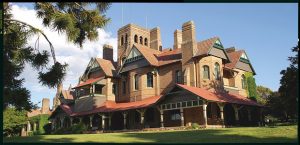



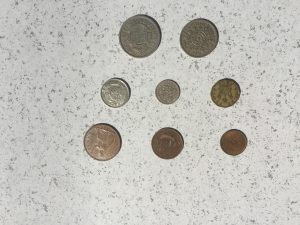

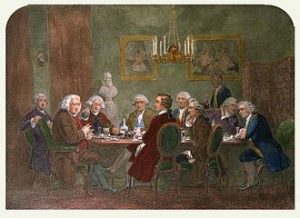
 This piece is several things.
This piece is several things.

